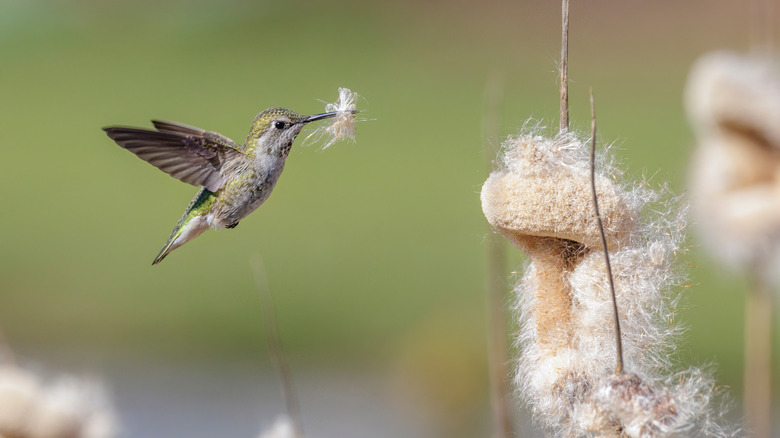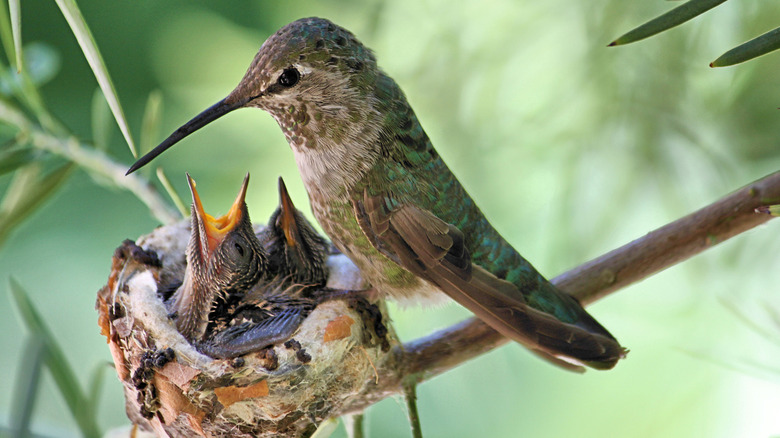Nesting Materials You Should Never Give To Hummingbirds
Hummingbirds seem magical, wings nearly invisible as they flutter from flower to flower. They also have a mischievous streak, nipping at one another as they compete for nectar. If you want to increase your chances of seeing their playful nature firsthand, there are many ways to encourage hummingbirds to nest in your yard.
Hummingbird activity in your yard may mean that you already have a family of birds living nearby. Hummingbird nests are hard to spot, but one of the telltale signs to look out for is a tiny bump on a high branch shrouded in dense foliage. In urban settings, you might even find nests on wires and hanging planters. The nesting season varies — as early as March in the southern U.S., July in northern and mountainous regions, and as late as November in the western U.S. Mama birds can spend up to seven days building their homes. They meticulously search for materials to make a soft and pliable nest, which grows with the chicks.
You can pitch in by setting out nesting supplies, as long as you understand what is safe for hummingbirds. Avoid anything with chemicals, including pet fur treated with flea and tick products and human hair. Dryer lint, although plush and warm, can become sticky when wet and may contain residue from fabric softeners or dyes that are harmful to hummingbird chicks. String and ribbon made with artificial fibers or other embellishments are not pliable enough for a hummingbird's nest and can get tangled up in a bird's tiny feet.
The best materials for a hummingbird nest
With those parameters in mind, there are still plenty of safe materials to offer nesting hummingbirds. If your pet has not been treated with chemicals, including shampoo, its hair is safe to offer birds. Strips of natural wool or cotton and wool yarn also are good options. Hummingbirds prefer white or light colors, as bright and dark colors may attract predators. Cut yarn and other items into short strands of a half-inch or less, making them easier for birds to work with.
Materials from your yard can also be used for the nests. Grass clippings that haven't been treated with pesticides or herbicides are ideal, as well as moss, lichen, pine needles, straw, tiny twigs, and shredded leaves. Place everything into a clean mesh bag — like what grocery stores sell onions in — or a suet cage, and hang this near a hummingbird feeder or in a prominent spot around your house.
As you attract hummingbirds to your yard, be aware of a law you should know about finding hummingbird nests and eggs. The Migratory Bird Treaty Act of 1918 makes it illegal for people to touch or move the nest of any active migratory bird, including hummingbirds. However, if you spot a nest in an unsafe location, contact the U.S. Fish and Wildlife Service for guidance.

